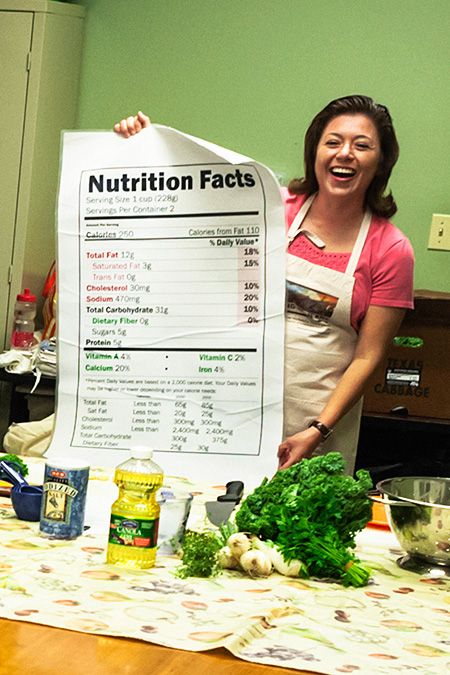When we talk about the Nutrition Fact Labels in SFC’s The Happy Kitchen classes, we recommend using the percent daily values (%DV) to make healthy choices. Instead of trying to remember how many milligrams of sodium one needs each day, we encourage participants to check the percentage to see if the amount is low or high. Our trick is 5% is low, and 20% is high. So, if the full package of ramen provides 70% of your recommended sodium intake for that day, it’s probably best to choose another food…. or at minimum, make extra healthy choices for the rest of your day.
I was recently tasked with explaining why there is no percent daily value for sugar. I had read from several reliable sources that there is no percentage because there is no agreed upon recommendation. However, I could already hear the follow-up question. “Is there no agreed upon recommendation because we don’t NEED any sugar, or is it because some people say we need one thing and others disagree?”
Here’s what I found:
There is no %DV for sugar on the nutrition fact label for two reasons:
1: sugar is not a required nutrient, so there is no minimum amount that we need
2: when the label was made, there was not a recommendation for the maximum amount.
People still disagree on the recommended maximum, and their suggestions range from 101-252% of your daily calories. For a 2,000 calorie diet, that means 50-125 grams of sugar, or about 12-31 teaspoons per day.
Part of the reason that people disagree is because it is most important to limit added sugars.
Because most Americans get a lot of added sugars, some institutions, like the World Health Organization, want to set a limit of 10% to keep added sugars down, but others, including the Institute of Medicine, say that if you’re getting most of your sugars from whole foods, like fruit and dairy, it’s okay to have more.
Since there is no percent daily value on sugar and no section on the label for ADDED sugar, the best ways to decrease sugar intake are:
- eat more whole foods, including whole grains, fruit, and dairy without added sugars
- when purchasing packaged foods, compare the labels to similar products and choose the option with less sugar.
- if you see on the label that there is sugar, look for it on the ingredient list to see if the sugar is added. Naturally occurring sugars are already part of the whole product, so they will not be on the list. Remember that added sugar has many other names, including those ending in “ose” (such as sucralose, dextrose, fructose, and glucose), high fructose corn syrup, molasses, cane sugar, corn sweetener, raw sugar, syrup, honey or fruit juice concentrates.
Bottom line: Limit your added sugars by sticking to whole foods and reading the labels on packaged foods.
1. Dietary Guidelines Advisory Committee: http://well.blogs.nytimes.com/2015/02/19/nutrition-panel-calls-for-less-sugar-and-eases-cholesterol-and-fat-restrictions/?_r=0 and WHO: http://www.bbc.com/news/health-26449497
2. Institute of Medicine: http://www.foodpolitics.com/tag/iom-institute-of-medicine/
Additional source: http://www.foodpolitics.com/2013/02/lets-ask-marion-whats-the-recommended-daily-allowance-of-sugar/

